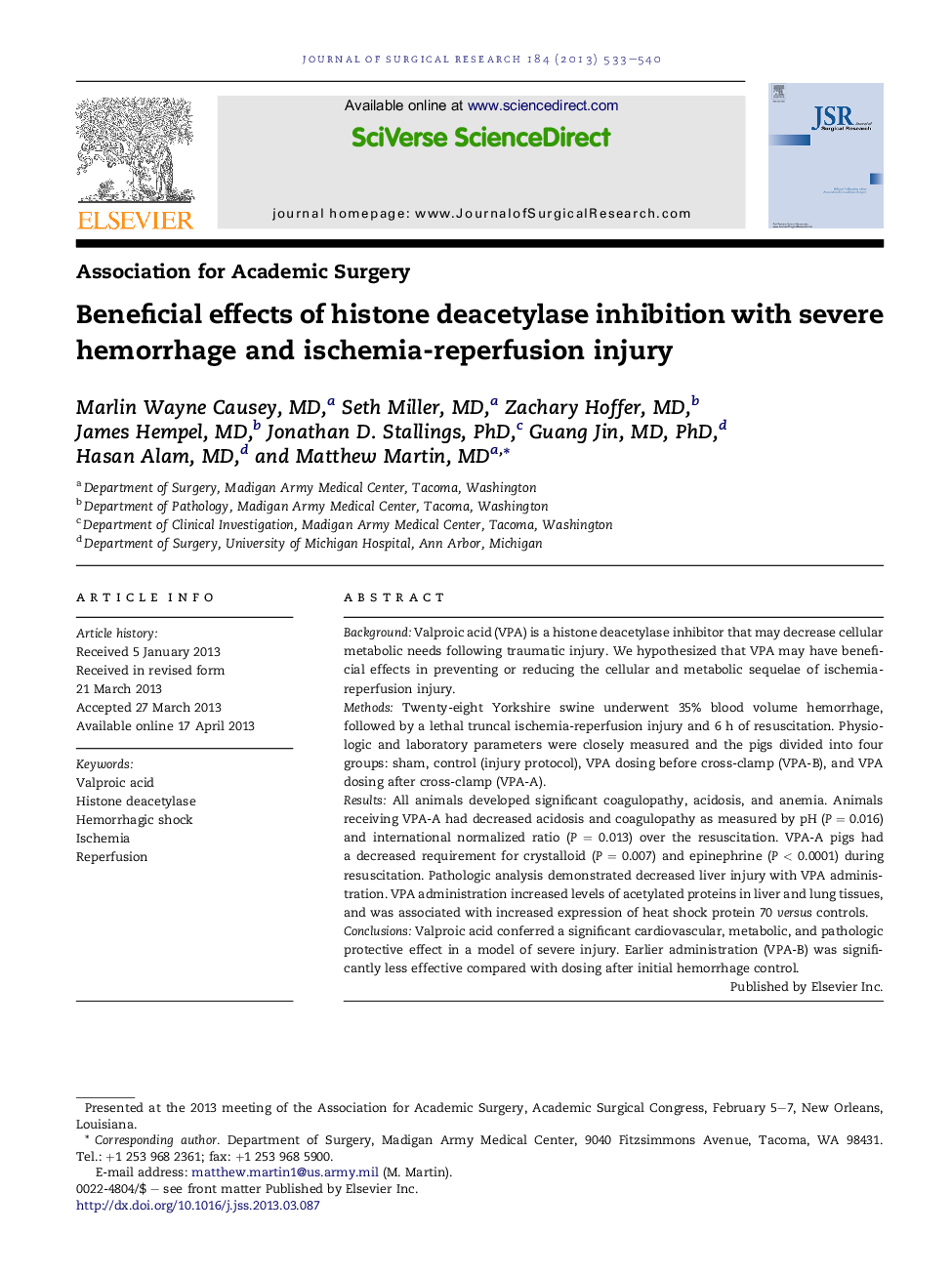| Article ID | Journal | Published Year | Pages | File Type |
|---|---|---|---|---|
| 4300645 | Journal of Surgical Research | 2013 | 8 Pages |
BackgroundValproic acid (VPA) is a histone deacetylase inhibitor that may decrease cellular metabolic needs following traumatic injury. We hypothesized that VPA may have beneficial effects in preventing or reducing the cellular and metabolic sequelae of ischemia-reperfusion injury.MethodsTwenty-eight Yorkshire swine underwent 35% blood volume hemorrhage, followed by a lethal truncal ischemia-reperfusion injury and 6 h of resuscitation. Physiologic and laboratory parameters were closely measured and the pigs divided into four groups: sham, control (injury protocol), VPA dosing before cross-clamp (VPA-B), and VPA dosing after cross-clamp (VPA-A).ResultsAll animals developed significant coagulopathy, acidosis, and anemia. Animals receiving VPA-A had decreased acidosis and coagulopathy as measured by pH (P = 0.016) and international normalized ratio (P = 0.013) over the resuscitation. VPA-A pigs had a decreased requirement for crystalloid (P = 0.007) and epinephrine (P < 0.0001) during resuscitation. Pathologic analysis demonstrated decreased liver injury with VPA administration. VPA administration increased levels of acetylated proteins in liver and lung tissues, and was associated with increased expression of heat shock protein 70 versus controls.ConclusionsValproic acid conferred a significant cardiovascular, metabolic, and pathologic protective effect in a model of severe injury. Earlier administration (VPA-B) was significantly less effective compared with dosing after initial hemorrhage control.
